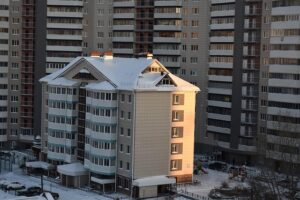EC Price Evolution: Tracking the Average Cost of Executive Condominiums in Singapore Since Inception
Over the past decades, the average price of Executive Condominiums (ECs) in Singapore has significantly increased, reflecting a strong and growing real estate market. ECs serve as an intermediate housing option between public and private condominiums, caterin…….

Over the past decades, the average price of Executive Condominiums (ECs) in Singapore has significantly increased, reflecting a strong and growing real estate market. ECs serve as an intermediate housing option between public and private condominiums, catering to middle-income households and investors, with factors such as preferred locations, amenities, and buyer demand driving price growth. In certain areas, prices have nearly doubled over the last ten years, indicating a robust property market that attracts both local and international investment. This upward trend in EC pricing underscores the resilience of Singapore's property sector, even with government policies aimed at ensuring housing affordability and market stability. Market analysts and stakeholders keep a close eye on this trend as it reflects the evolution of Singapore's housing landscape and the ongoing appeal of ECs as a valuable and stable investment opportunity within the city-state.
Over the years, the Executive Condominium (EC) market in Singapore has showcased a dynamic pricing trajectory, reflecting broader economic trends and policy shifts. This article delves into the historical trends of the average price of ECs, examining how these properties have evolved since their inception, and offers insights into the factors that influence their future price projections. From early years of affordable housing to current market dynamics, we analyze quarterly and annual price movements, long-term trends, and predictive patterns to provide a comprehensive understanding of the EC price landscape in Singapore. Additionally, we explore economic indicators, government policies, demographic shifts, real estate developments, and global events that could shape the future value of these properties. Understanding these elements is crucial for investors and homeowners alike, as they navigate the intricacies of the property market, with a particular focus on the average price of ECs in Singapore.
- Historical Trends of the Average Price of EC in Singapore
- 1.1. Early Years of Executive Condominiums (ECs) in Singapore
Historical Trends of the Average Price of EC in Singapore

The historical trends of the average price of EC, or Executive Condominiums, in Singapore have shown a steady appreciation over the years, reflecting the property market’s resilience and growth. ECs represent a unique segment in the Singaporean real estate landscape, catering to both upgraders from public housing and investors with their middle-income characteristics. Since their introduction as a hybrid of HDB flats and private condominiums, EC prices have seen an upward trajectory, driven by factors such as location, amenities, and the evolving preferences of homebuyers. Over the past decade, the average price of EC in Singapore has witnessed significant growth, with prices nearly doubling in some areas. This trend is indicative of a robust property market that continues to attract both local and foreign investments, despite economic cycles and policy adjustments by the Singapore government aimed at maintaining affordability and stability. Investors and homeowners alike have observed this upward price movement, making the average price of EC in Singapore a subject of keen interest for market watchers and participants.
1.1. Early Years of Executive Condominiums (ECs) in Singapore

Since their inception, Executive Condominiums (ECs) in Singapore have evolved significantly, reflecting the changing landscape of housing in the country. Introduced as a hybrid housing scheme to address the housing needs of both singles and families, ECs were initially more affordably priced compared to private condominiums. In the early years, from their introduction in 1984 until the mid-2000s, the average price of an EC was significantly lower than that of non-landed properties in the open market. This made them an attractive option for middle-income families who were priced out of the private property market but could not qualify for public housing due to income ceilings. Over time, as demand increased and the government adjusted policies to ensure a stable supply of public and subsidized housing, prices began to rise. The average price of an EC has seen a steady appreciation over the decades, mirroring the overall growth trajectory of property values in Singapore. This trend underscores the stability and potential for capital appreciation that ECs offer as part of a long-term investment strategy for homeowners.
Over time, the average price of ECs in Singapore has demonstrated a trajectory of growth, reflecting their role as an accessible housing option for both families and investors. The historical trends, particularly from the early years, reveal a consistent pattern of appreciation, underscored by the nation’s robust property market and evolving residential needs. As the data presented indicates, understanding these trends is crucial for prospective buyers and investors to make informed decisions. The insights into the price evolution of ECs contribute significantly to the broader conversation on real estate investment and housing affordability in Singapore.







